28. Jun 2020 - DOI 10.25626/0114
Katalin Madácsi-Laube is research associate at the Literature Archives of the Academy of Arts, Berlin. She studied Hungarian philology, History and German (Germanistik) in Eger (Hungary), Freiburg, Göttingen and Berlin. Her current research focuses on the oevre and literary estate (preserved in Berlin) of the Hungarian writer Imre Kertész.
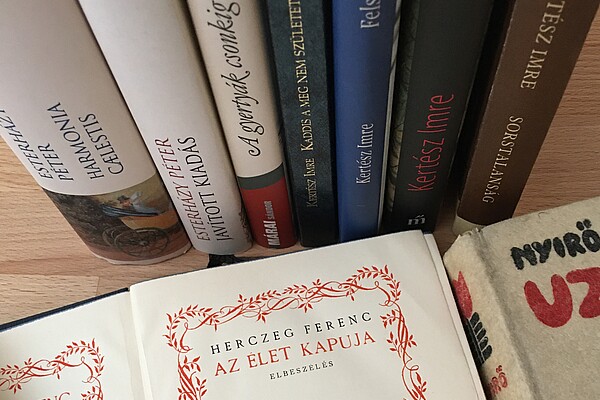
According to government circles, the long-announced new National Core Curriculum (NAT), the basic curriculum guidelines for Hungarian schools, was to be more modern and up-to-date than its previous versions. On 31 January 2020, Prime Minister Viktor Orbán signed the provisions into law – even before the associated framework plans were published. Immediately, a wave of protest broke out among educators, schools, parents and academics from across the country. According to László Arató, chairman of the Association of Literature Teachers, the new basic curriculum is “neither national nor a basic curriculum.”[1] Other reactions were significantly more emotional.[2] The protests and petitions are directed primarily against the changes to the guidelines for Hungarian language and literature, but also history, demanding their wholesale reversal. The changes to the canon of recommended works of national literature play a rather more subordinate role in the more factual critiques made by the Hungarian schools and professional associations. They have, however, become a serious concern for the foreign press: Considering the inclusion of the works of the controversial authors Albert Wass (1908-1998) and József Nyirő (1889-1953), Alex Rühle, for example, commented in the Süddeutsche Zeitung, that instead of Esterházy and Kertész, Hungarian students will now be reading “the works of fascists.”[3] In particular, the government has been forced to respond to the impression that the work of Shoah-survivor Imre Kertész “had to make way for antisemitic writers” in the national canon.[4] Those well-acquainted with the country and its literature ask: “How is one to understand Kertész’s exclusion from school lesson plans, given the institutional care that has been put into preserving his literary inheritance?” This refers in particular to the Imre Kertész Institute in Budapest, which was founded only three years ago, under the care of Mária Schmidt, chief historian of the Orbán government.[5]
While the outbreak of the Covid-19 pandemic in mid-March has unevitably pushed the vocal protests against the NAT into the background, the introduction of the new basic curriculum is undoubtedly a cultural-political decision with far-reaching consequences. As such, it is worth considering not only the government decree and the ensuing protest, but also their cultural and socio-political implications, with a particular eye to the role of Imre Kertész and his work in the current cultural-political debates in Hungary.
National basic curricula have shaped teaching at Hungarian schools since 1995, establishing the basic content and key competences that every Hungarian school across the country is expected to impart to its students. Already in 2012, the basic curriculum drew attention as a tool for the formation of a common national identity. That year, the Orbán government adopted its own curriculum, the one that is now set to be replaced by the new NAT, despite the fact that the original already evinced a strong ideological bent. The NAT 2012 formulated the required role and value of education in accordance with the still very controversial Basic Law, adopted in 2011 – in particular the preamble’s emphasis on the Christian-national basic values and its focus on all ethnic Hungarians. According to this curriculum, in addition to providing students with a national and universal education schools are expected to participate in the “deepening of moral intuition and mental and emotional receptivity” in the service of the common good and in a strengthening of national self-confidence, unity and patriotism. Special attention is paid to Hungarians living outside the country’s borders. The unequal emphasis on community values versus individual personal development and on duties versus the rights of the individual is striking. In this sense, the terms “nation” and “fatherland” are central to the overarching premise of the basic curriculum; in contrast, the subject-specific components of the NAT 2012 appear subject-oriented and devoid of explicit ideological content.
Against this backdrop, the news about the planned revision of the basic curriculum attracted a great deal of attention. Expectations for the reform were as high as they were varied: numerous educators and parents demanded a lessening of both the number of class hours and material. By contrast, national-conservative and ultra-national supporters of the government primarily focused on ideological priorities. In autumn 2017, psychologist Valéria Csépe was commissioned to develop the new curriculum. A year later, she and her team submitted a three-hundred page draft that included both European comparisons and the newest pedagogical insights. In an interview, she strongly advocated for experience-based learning and for the applicability of school-based learning to daily life; she also interpreted the word “national” in the new curriculum in such a way that it would apply to all students in the country. Considering the fact that ‘national’ had become a central battle cry of Orbán’s government in the last decade, it is not surprising that the Csépe draft was received very coolly by the Ministry of Education and was immediately passed on to an unspecified body for revisions. Over the course of a month, educators, professional associations, students and parents were given the opportunity to submit their thoughts on the proposal, after which the panel worked behind closed doors on the final draft. In his press releases from the beginning of February, Zoltán Maruzsa, the State Secretary responsible for public education declared the extensively revised draft to be a “deliberately patriotic, child-oriented and a twenty-first century curriculum” that gave schools “more freedom” than its predecessors had. István Simicskó, representative of the smaller coalition partner Christian Democratic People’s Party (KDMP) and government commissioner for patriotic education, used a noticeably different vocabulary when he informed his supporters about the aim of the new curriculum: to arm the children with a value filter. To regularly discuss important values such as honour, camaraderie, courage, self-discipline or loyalty in class. According to Simicskó, this “forming of minds” in schools could show “visible results” within a decade.[6]
The document’s history thus clarifies the impression made by the new NAT: this is not a brand new curriculum, but only the revision of the existing basic curriculum, a patchwork of elements from the NAT 2012, the Csépe draft, and a few newly produced passages. The ideologically charged preamble of the NAT 2012 remains valid. The subsequent discussion of pedagogical principles takes new scholarly insights into account. What is truly new is the part of the basic curriculum in which the individual subjects are listed – with their principles and goals, the most important topics and the desired learning results. Here, the largely factual passages of the NAT 2012, especially for the subjects Hungarian and History, have been transformed into ideologically charged formulations. It is not surprising that the most visible changes relate to these subjects, since – according to government circles – they were the most in need of reform, given their decisive role in the desired creation of national identity through patriotic education. It is thus also no coincidence that precisely these subjects have become the largest bone of contention for the NAT critics.
Already the introductory lines regarding the subject of Hungarian language and literature read like a political declaration: Due to their common language, cultural characteristics and traditions, all Hungarians in the Carpathian Basin – regardless of state borders – form a unity, a nation. Therefore, the class subject covers all Hungarians in the Carpathian Basin and understands them as a unity. Although the previous basic curriculum already paid special attention to the Carpathian Basin, where around three million Hungarians live beyond the country’s borders since the Treaty of Trianon (1920), the 2020 curriculum’s emphasis on the linguistic-cultural Hungarian nation in this context is new. It does however fit into the Orbán government’s goal, pursued consistently since 2010 through numerous measures, to integrate Hungarian minorities living outside the country’s borders into the political and cultural life of the country. In the curriculum, this goal is reflected in thematic focuses such as “‘Bleeding Hungary’[7] - Trianon in Hungarian Literature” and the redesign of the canon of twentieth-century literature. In addition to authors such as Wass or Nyirő, a number of newer names appear in the basic curriculum, obviously connected to one another by the fact that they hail from areas lost to Hungary after the Treaty of Trianon: Géza Gyóni, Ferenc Herczeg, Sándor Kányádi, Kálmán Kittenberger, Károly Kós, Sándor Reményik, and Zsigmond Széchenyi, as well as Lajos Kassák and Ernő Szép.
In literature class, it is now expected that teachers give special attention to those authors who with their “orientation-giving moral stance” and “oeuvre of outstandingly high quality” determined the thinking of their time – as well as that of today. However, the canon of compulsory literature can only include works by authors’ whose oeuvre is “completed” and “assessed with certainty”; contemporary authors can only be included on an optional basis. The curriculum also establishes gradations, depending on the level of knowledge, moving from excerpts to an author’s oeuvre, creating a list of works to memorize. It is striking that the inconspicuous, but in this context powerful phrase “for example”, that was included after much effort by the teacher’s association in the NAT 2012, is completely missing this time. Previously, it had provided literature teachers with the possibility to set their own accents on the material beyond the core canon. Even with the canonisation of Wass and Nyirő, who had already been “smuggled into” the NAT 2012 at the last moment, it had thus still been possible to find an individually tailored way to teach their works.[8] Both authors are central to the Trianon theme, and their works remain very popular in extreme right-wing circles today due to their antisemitic views and their proximity to the fascists of the interwar period. The NAT 2020 now supplements this controversial series of authors with an almost iconic personality from the Horthy era: Ferenc Herczeg (1863-1954), whom Hungary attempted to nominate for the Nobel Prize in Literature on several occasions in the mid-1920s. His historical novel The Gates of Life is now required reading – despite finding little interest among experts.
For the new names to be included in the compulsory reading catalogue, representatives of Hungarian modernism such as Miklós Mészöly, Ágnes Nemes Nagy, Géza Ottlik, Antal Szerb, and even Imre Kertész had to give way. Péter Hajnóczy, who died young, and the political poet Gáspár Nagy are among the few post-war authors to remain. In response to the enormous wave of outrage, certain artists that had been cut — including Esterházy, who died in 2016, and Kertész, as well as Ottlik and Szerb — were accommodated in the supplementary curriculum framework, but only as optional reading.
Trianon and the Carpathian basin are also to play a particular role in history class. However, the principle of chronology initially requires a gallop through the centuries: the headings hint at a consistently Christian-national narrative, as well as at a largely anachronistic understanding of history that overwhelms students with an abundance of topics, people and events. The focus has been narrowed even further onto Hungarian history; universal history should be treated like “an island” and, if possible, in reference to its repercussions in Hungary. In contrast to literature class, history lessons are expected to move into the near-present, with quite detailed modules on “The End of Communism” (8 hours) and “The History of the Twenty-First Century” (10 hours), including biased learning objectives that reflect the policies of the Orbán government. While a differentiated view of history is one of the envisaged learning outcomes, history class is primarily used here for the purpose of shaping and strengthening national identity. Critical questions about national history are not included in the curriculum at any point; undesirable developments and failures appear exclusively in connection with fateful external influences and limited internal options. Stated learning outcomes include strengthened “national identity”, “love of the fatherland”, “pride in the past of our people”, but also the development of “social responsibility”, “compliance with norms” and knowledge of historical examples of “self-sacrifice” and “heroism”. Civics, currently integrated into history lessons, is once again to be taught as an independent subject. Here too, the focus is on strengthening the feeling of national belonging, combined with the theme of “national defence”, understood as a task not only for the armed forces, but all citizens.
Numerous educators responded to the government decree with spontaneous actions and protests on social media, including posting their picture while holding up a sign that read: “I don’t teach fascist writers”. In contrast, the professional association of Hungarian language teachers endeavoured to keep its criticism of the new NAT 2020 factual in its published statement, arguing that due to the sheer number of authors and works, the new methodological principles – which they welcomed – were impossible to implement as part of the new Core Curriculum. The overregulation of educational material limited the professional scope of individual teachers, and the possibility of in-depth work on individual works was illusory for reasons of time. Furthermore, they argued, the canon was also largely antiquated, making the subject exceedingly unpopular; the inclusion of contemporary literature was absolutely necessary to demonstrate the liveliness of the subject. Although no one wanted to denigrate “historical trauma”, the new emphases of the basic curriculum, such as the “Concept of Persecuted Hungary”, “Mourning for Trianon” or the “Expressions of Unity with Hungarians Living Outside the State Border” would not result in valid teaching plans. The changes in the canon were clearly not responding with current scholarship, but would become part of the culture wars and thus deepen national divisions. The new NAT thus once again made literary education into the servant of ideology and politics, throwing itself back at least four decades into a role from which it had already freed itself in 1978. Since the government decree “endangered national unity and culture, the development of the students, and the professional work of educators to a serious degree”, thereby also “poisoning” the public atmosphere, the teachers’ association’s demanded its withdrawal. The protest of teachers received sustained support from numerous universities and research institutions in the country. More than 50 university lecturers signed a statement expressing their indignation at the elements of the NAT that related to the teaching of Hungarian and the new names in the literature canon, with the exception of newly included Sándor Kányádis. Even the conservative independent media criticized, even derided and ridiculed, the new Core Curriculum.[9]
Equally irreconcilable was the criticism of the History Teachers’ Association, who not only complained about the lack of subject-expert involvement in an official statement, but, like their Hungarian language and literature colleagues, pointed to the methodological and substantive failures compared to previous curricula. Their critique centred not only on the patriotic focus of the subject and the proposed positive identification with history, but also the emphasis on a narrative-based transfer of knowledge at the expense of long-established primary source-oriented teaching, the distorted image of history and the required ideological guidelines.
Conversely, the new Core Curriculum received support from pro-government cultural professionals from within the theatre world. Wass and Nyirő were welcomed as the best literary examples of national self-confidence and pride (Attila Vidnyánszky, head of the National Theatre) and as true “giants” who ranked highly in world literature (György Dörner, head of the New Theatre).[10] The daily Magyar Nemzet, by now a mouthpiece of the government, made reference to supporters of the new NAT on a daily basis, including the Cultural Association of Hungarian Teachers in the Carpathian Basin (KMTKE), whose chairman, the influential literary historian and educator Mihály Takaró, also had a leading role in the development of the Core Curriculum. In an interview with Magyar Nemzet, he rejected the supposed appearance of an “ideological struggle” and described the innovations as a long-overdue addition of national-conservative authors to the previous urban-liberal literary canon, with a stronger emphasis on literature that existed outside the state borders. Government members and ministerial officials dismissed the nationwide protests as inappropriate and purely politically motivated, as well as making the now expected references to George Soros. Orbán supporters tried to situate the protests as part of a daily political routine by declaring them the “jeering of globalist, cosmopolitan mental midgets (szellemtörpék)”.[11] The profound polarization of the public is reflected in the proliferating petitions launched online for and against the NAT, which stood in mid-May at 24.409 YES and 26.386 NO votes.
However, the critiques do not run along the usual political lines, and even some previously safe government bastions seem to join in the protests. The declaration of the time-honoured Budapest Piarist Gymnasium (Humanistic High School), published online in February but since deleted, and which 1600 educators from Christian schools nationwide co-signed, was probably particularly painful for the government.[12] The statement mentioned the “long-standing serious crisis” and the “lack of a renewal in teaching”, which was “impeded” by this politically and ideologically motivated government policy. Instead, a society-wide consensus beyond the ideological flashpoints of the day was urgently needed to address the issues in education – including, according to the statement, the “degradingly low salaries” of teachers. According to the current wage tables, the starting salaries of teachers with a university degree remain below the guaranteed minimum wage – a fact which dramatically illuminates the fissures between nationalistic noise and nationwide reality. Indeed, just before the release of this statement, Orbán, in his annual review, described the past ten years as “the most successful in the history of Hungary in the past century”. Furthermore, he called for restraint in people’s critiques and for more respect towards educators, since “the workers, specialists and engineers who keep the most modern factories in the world running here in Hungary all come from our schools and universities”.
If we consider the political declarations and the far-reaching restructuring of all areas of Hungarian society since 2010, the new Core Curriculum presents itself as part of a master plan, an agenda that has been implemented consistently and ruthlessly and that could shape the country for many years to come. The newly planned elements of the Core Curriculum not only fit the needs of quotidian politics, but also support the future-facing historical narrative advocated by Orbán in his speeches and interviews. According to this narrative, after a two-decade post-communist transition period, Hungary is finally regaining its old strength and dignity – led by the Fidesz party. Through their two-thirds majorities in parliament – achieved in 2018 for the third time, Fidesz has ostensibly been given the mandate to fundamentally reform the country as they see fit. After the “revolution in the voting booths” – as Orbán always describes his election victory – the system of “national cooperation” (NER) was established to organize Hungarian society. Rather than being “paralyzed” by competing ideas and debates, the country should be guided instead on the basis of “peace, freedom and unity” along its designated path.
Larger visions are generally developed at events such as the annual Free Summer Academy in Bad Tuschnad (Băile Tuşnad), Transylvania, where Orbán traditionally appears as a guest speaker. It was there that he announced, after Fidesz’s 2018 election victory, that Hungary was facing a new phase of restructuring. After a period of construction and stabilization, the time has now come to establish a new era. According to Orbán, an era is more than a political organizing principle, namely has its own cultural and intellectual characteristics; for that reason, the political order created thus far must now be “embedded” in a cultural epoch in the coming years. As to his current political goals, Orbán described his plans to “rebuild the entire Carpathian Basin”, which would open up new perspectives after a hundred years of “Hungarian loneliness”. A strong, courageous and financially strong Hungary would also offer its neighbours a opportunity to cooperation: It was time for the expansion of common infrastructure and defence policy in the name of creating a strong Central Europe.
Orbán’s vision is for Hungary as a leading country in the Carpathian Basin and one of “the five best EU countries” by 2030, which explains the reforms planned for the school system and national defence. In his speech in Tuschnad, Orbán asserted that “every rising nation’s success story begins with the strengthening of its self-esteem”. Strengthening national self-esteem and pride should thus already be one of the main goals of school curricula, particularly within the key subjects of Hungarian and History. Commenting on the new Core Curriculum, Orbán stressed the importance of students learning about national successes, and not lost battles and wars, in order to help mobilize the country’s energies and to raise children to pride and performance. In parallel to the curriculum reform, the government is establishing sports and homeland protection centres nationwide to promote a “comradely” spirit – a extension of the new education outside the classroom. In order to achieve these goals, a lesson plan is needed that relies primarily on quantity and leaves no room for questions and deeper reflection. One correction in the new NAT seems particularly emblematic for this new approach: in the section on “Citizenship and Democracy Education” (p. 445), the term “critical thinking” was replaced with “balancing thinking”.
For the current parliamentary term, the Hungarian right-wing under Orbán is determined to culturally anchor Hungary’s now firmly installed political system that Orbán himself called described as “illiberal democracy”. A number of measures have already been instituted within the realm of culture and the sciences, including the abolition or restructuring of scholarly institutions (Central European University, the 1956 Institute and the Academy of Sciences), the reorganisation of institutes such as the National Library and the Petőfi Literature Museum, and a corresponding exchange of management personnel. According to the young historian and ideological pioneer of the Orbán government Márton Békés, it is time that right-wing elites define both their own standards and a new canon in opposition to the “left-liberal” canon that has prevailed until now. For Békés, the new “conservative cultural era” requires not only ideology, but a cohesive culture, not only loyalty, but talent and a narrative of its own. Cultural achievements in the form of “iconic works, memorable historical events, permanent buildings, common successes and collective myths” are thus vital. It is also crucial to clearly determine what belongs in the canon and what does not.[13]
In this new conservative cultural era, Herczeg, Nyirő and Wass are on the curriculum, but Esterházy and Kertész are not. A real cult of Wass has established itself since the fall of the Iron Curtain, expressed in numerous monuments across the country, some of which have been personally inaugurated by Orbán. Nonetheless, historian Krisztián Ungváry argues that Wass’s popularity cannot simply be explained by way of his historical incorrigibility or antisemitism, which has gained him heroic status in far-right circles, but in fact reflects the much wider “degree of non-reflection” that currently prevails in Hungary. Wass provides an echo chamber for the entirety of the right-wing political spectrum – not only those looking for an expression of solidarity with the oppressed Hungarian minorities, “but also those who have not yet finished with the Hungarian great power fantasies and those who are real National Socialists or antisemites”.[14]
The removal of Nobel Prize winner Imre Kertész from the Core Curriculum is a most confusing issue for at least three reasons:
(1) Kertész’s novel Fatelessness has been part of the Core Curriculum since 2012. For this a “special exception” was necessary, since the author was still alive in 2012 and the canon was to consist of exclusively “completed” oeuvres. The author was listed under the heading “literary prizes”, a section no longer extant in the new curriculum. Since the overarching premise of the Core Curriculum is to highlight the “numerous” Hungarian prize winners – above all the Nobel Prize winners, as they are ideally suited to reflect national identification and pride. The planned removal of Kertész from the canon thus inherently contradicts the logic of the new curriculum.
(2) Beginning with the new school year, the Holocaust will also be studied in literature class, but only for two hours and without Kertész’s novel. Instead, students will read excerpts from Ernő Szép’s The Smell of Humans and Tadeusz Borowski’s World of Stone. It remains an open question why a report on the three-week reign of terror of the Hungarian Arrow Cross (1944) and a narrative about Auschwitz by a Polish author were selected instead of Kertész’s novel. After public protests, Kertész’s novel was reinserted in the curriculum, but only in conjunction with the film adaptation under the heading “Literature and Film”, along with two other book-film pairs. Even if the works of Szép and Borowski are pertinent to the Holocaust, such a clear resetting of the status of Fatelessness is remarkable. Twenty years later, Kertész’s bitter insight remains valid: “It is possible in Hungary to speak about the Holocaust, even about the art of the Holocaust, without mentioning my name. As if I had never accomplished anything in this area."[15]
(3) The deletion of Kertész’s novel from the compulsory reading list becomes even more incomprehensible and contradictory, when one considers that in December 2016 the government founded – at great expense – its own institute for the publication and maintenance of the Nobel Prize winner’s life’s work. The Kertész Institute is soon to open its doors to the public as an “information and learning centre”.
The institute, under the care of the non-profit Public Foundation for the Research of Central and East European History and Society (KKETTK) and its director general, Mária Schmidt, is committed to making Kertész’s works accessible to the general public and to increase its prominence and popularity. It begs the question why a government that provides state funds for such an institute is simultaneously willing to dispense with a tool as powerful as the school literature canon. There are two possible explanations for this paradoxical situation: Either the institute was founded as a broadside in the power struggle for political prestige, serving as a fig leaf against allegations of antisemitism that are regularly made against the government,[16] or the most determined supporters of Kertész’s memory, including Schmidt, have lost their influence in government circles. Just last summer, the Association of Jewish Communities in Hungary (Mazsihisz) and the Raoul Wallenberg Association protested when they heard that Takaró would be entrusted with the ‘patriotization’ of the new Core Curriculum. Takaró was known for his disregard for not only Kertész and other Jewish authors but also Esterházy, as well as for fueling the debate whether Kertész was a Hungarian writer at all.
Regardless of which explanation comes closest to the truth, one thing seems clear: For several reasons, Kertész’s literary legacy will have a difficult time in Hungary for the foreseeable future. The non-profit KKETTK is now responsible for the administration and maintenance of his intellectual heritage including copyrights, based on a publicly unavailable contract concluded with the widow Magda Kertész a few days before her death. These actions caused concerns at home and abroad, since Kertész had originally transferred the world rights to his publications to the Rowohlt publishing house and deposited his papers at the Berlin Academy of the Arts, of which he was a member. His estate has been secured, archived and made available to the public in Berlin. Since Kertész had no descendants and did not make any special arrangements for his work (although his diaries note his concerns on the matter), there is a degree of uncertainty in Hungary about how to deal with his legacy.
Kertész was never really a public figure in Hungary, in contrast to his reception in Germany, where he was well-received and exerted a unifying power across political lines. He kept a critical distance from political events unfolding in Hungary and was not a participant in the democratic opposition and intellectual foment preceding the 1989 political turn, to which he maintained a certain scepticism. The decade spent in Berlin, but also his undifferentiated criticism of Hungary in later years, alienated him from many in his country. After his eventual return to Budapest and the acceptance of the Holy Order of St. Stephen in 2014, he not only lost some of his close companions, but also the sympathies of those who saw him as a figurehead for their oppositional stance. Despite his global prominence, it became relatively quiet around the writer in his final years.
For those reasons, the foundation of the Imre Kertész Institute under the care of Mária Schmidt caused great irritation and distrust. Schmidt is seen as the key manager not only of a state-funded, but also power-political, memory empire. Her institutes and projects, such as the House of Terror or the House of Destiny (which is still awaiting its opening day), are subject to regular criticism from scholarly circles.[17] Another institute headed by her, the Institute for the XXI. Century, presents itself on its website as a political propaganda facility for the government. Moreover, it pridely presents guest speakers such as Steve Bannon, Milo Yiannopoulos and the ethno-nationalist Götz Kubitschek, all of whom, according to Márton Békés (a close colleague of Schmidt), come to Budapest and quickly realize that they have something to learn from their Hungarian discussion partners and not vice versa. In this respect, many who care about Kertész’s work have raised the legitimate question of whether this eponymous foundation is able to offer the appropriate institutional setting for a consideration of the writer’s legacy.
Even among the government’s conservative supporters, there does not seem to be a consensus on how to deal with the writer’s legacy. In her public statements, Schmidt has highlighted her friendly relationship with the writer and regularly emphasizes the similarities between Kertész’ life’s work and her own. These consist, above all, in their uncompromising rejection of the Kádár-regime as a totalitarian dictatorship, a personal aversion to left-wing and liberal social actors in Hungary, and a critical view of Muslim immigration to Europe, along with the resulting criticism of Western liberalism. It is above all this side of Kertész that is presented in Hungary. While significant to Kertész’ thinking, these aspects are only one part of it: He himself identified as a liberal conservative. Another, albeit unspoken, commonality is also relevant here: he distrusted democracy, something that is seemingly shared by Orbán and his circle. Kertész’ distrust, however, was based on his fear of the populist rule of the masses, thus precisely what, with Orbán’s Fidesz party has mastered with near perfection.
Despite these superficial similarities, it will be difficult to keep the numerous irreconcilable differences between state policy and Kertész’ thinking invisible in the long term. No matter how often Zoltán Hafner, a former editor and friend of Kertész and now director of the Institute, tries to reclassify everything that is ‘bothersome’ about Kertész and his work as a misunderstanding, the author is ultimately not an appropriate icon for Hungarian national pride in the sense of the new Core Curriculum. His radical individualistic attitude and anti-collectivism, whether on the right or the left, were more than dismissive: It is nearly impossible to make him a national hero, with or without a Nobel Prize. Conversely, those experiences would make him the ideal candidate to stand in a curriculum that openly and without bias considers the ambivalences of the twentieth century. But also Kertész’ ‘subject’, the Holocaust, is often little more than a compulsory exercise in these Hungarian circles. It seems as if one twentieth-century “national trauma” is obviously enough, and the choice seems to have landed on Trianon.[18] A, appropriate integration of Kertész’ oeuvre into the world of ideas of the Hungarian right, whose representatives and supporters are otherwise happy to support Schmidt’s institutes, is thus hard to imagine in the long term.
Translated from German by Julia Sittmann
Katalin Madácsi-Laube: A New Era of Greatness: Hungary‘s New Core Curriculum. In: Cultures of History Forum (28.06.2020), DOI: 10.25626/0114.
Copyright (c) 2020 by Imre Kertész Kolleg, all rights reserved. This work may be copied and redistributed for non-commercial, educational purposes, if permission is granted by the copyright holders. For permission please contact the editors.
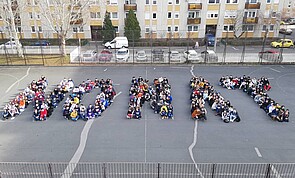
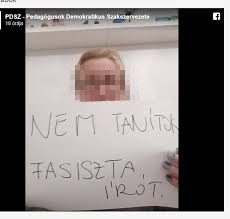
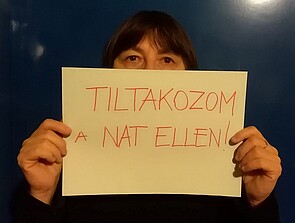
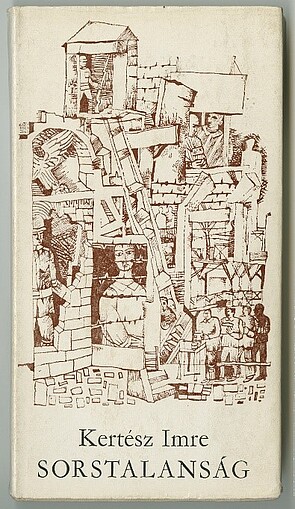
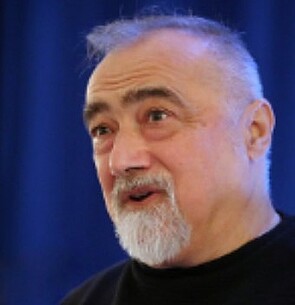
Ágoston Berecz · 18.01.2021
The Trianon Ramp and the Obstinate Memory of a Magyar Greater Hungary
Read more
Emily Gioielli · 07.02.2020
From Crumbling Walls to the Fortress of Europe: Changing Commemoration of the ‘Pan-European Picnic’
Read more
Kata Bohus · 31.10.2019
Éva on Insta: Holocaust Remembrance 2.0
Read more
János Gadó · 16.08.2019
The Splendour and the Misery of the House of Fates
Read more
Victoria Harms · 12.09.2017
Open Society v. Illiberal State: Europe, Hungary, and the ‘Lex CEU’
Read more
Get this article as PDF download (including pictures).